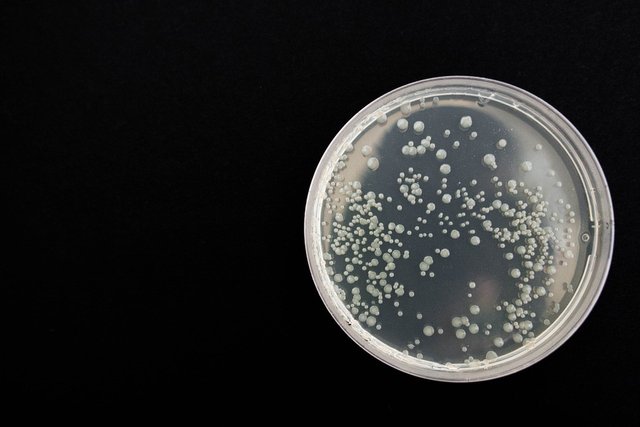A day in a microbiology lab
I arrive at 9 in the morning, together with the three guys working in the lab with me. For a few moments I go through the daily ritual of greeting everyone, then I check my notebook what I’m going to do today and go to work.
It’s plasmid isolating time! The day before, I added a new gene in form of a DNA ring to a strain of E. Coli bacteria, to multiply it, so it can be used in yeast. But for that, I first had to get it out of the bacteria.
The protocol of the isolation has become second nature to me, I’ve done it quite a few times by now. Taking some cells, centrifuge, add solutions to break open the cells and get the DNA out, centrifuge, clean. Takes me less than an hour. The result is a tiny drop of a clear liquid.
The thing with molecular genetics is, that you’re working a lot with tiny drops of clear liquids. They all look the same. You can’t actually see what you’re doing, not when you’re adding 1 microliter of something.
After the isolation, I need to quantify the plasmid inside the solution. Luckily, we got a machine for that, which uses light to determine the concentration.
200 ng per µl! Not bad, not bad at all. I take the small flask with the plasmid and add a restriction enzyme, which cuts the DNA ring into a strand. For that, it needs about an hour so I take the chance to have lunch.
When I return to the lab, everything has slowed down. In the morning, everyone had been busy bringing their experiments into action, but after lunch there is usually a lot of waiting.
I take the linearized plasmid and start the procedure for adding it to a yeast strain. This time, I need to work at a microbiological cabinet, which keeps away any kind of microorganism that could contain my yeast. Most bacteria grows a lot faster than yeast and would ruin my experiment.
It’s a repetitious task, adding different solutions to the liquid yeast culture, lightly shaking, adding the gene, shaking, waiting, sometimes up to an hour, adding something else, waiting again. All that in a sterile environment.
Finally, I have cloudy liquid, less than half a milliliter, which contains the transformed yeast cells. I carefully spread in a thin layer on a nutritional jelly called agar, contained in a petri dish and put it in a warm incubator. The yeast cells will take about two days two grow, and only those that absorbed the new gene will have a chance to grow, because only they produce the nutrient that the agar is missing.
I hope they grow. Because only if they do, I can continue my research.
picture taken from pixabay

Good description of your day! I bet it is even more interesting in reality - at least if you don't know it from everyday work ;-)
Looks like we have a moon post.
You have just said moon. I bought some moon coins today :D
I do like MOON coins lol
This is a comment.
This is a reply.
Is this a question?
It's an exlamation!
Woah!?
.....yeah....
High five microbiologist, I can so resonate with your stories
trying to transform yeast cells too, any protocols for K. lactis?? lol
No, sorry ^^
I'm still at the beginning of my career and am mostly working with protocols stored in our database and most of them are for saccharomyces cerevisiae.
Brew beer, that's a protocol you can develop by yourself~
Gonna do some genetic engineering for the perfect beer
I will cheers for that haha, upvoted and followed. steem on labbers~
That's an interesting day. Upvoted & followed :).
Thanks! I wasn't sure if people are actually interested in how a day at the lab progresses. Maybe I'll write some more about it at a later point.
Do so, I'd be interested.
It's so refreshing to hear of somebody else living in the workplace of four walls and loving it! :-)
Keep up the (day in the life of a laboratory posts!!)
There will be more in the future, thanks for your kind words!
cool post I like this kind of thing on steem
Happy to hear that, I'll try to provide more in the future!
Yes @Suesa to the moon we go !
#Steem #Ethereum #Bitcoin
LOL
İnteresting content, following :D
Glad you like it! I'm also always open for suggestions what topic to write about next.
Antibiotic resistance maybe :D
Good idea! I'll think about how to put it into a good story.
Cool !
wow it must of been a really busy day hahaha, make sure to check out my new post on how will humans look in 1.000 years, its all 2017 science. on how will humans look in 1.000 years, its all 2017 science.
Was it in 1000 years?
Which years science is this based on?
Is this part of your zombie virus development?
maybe